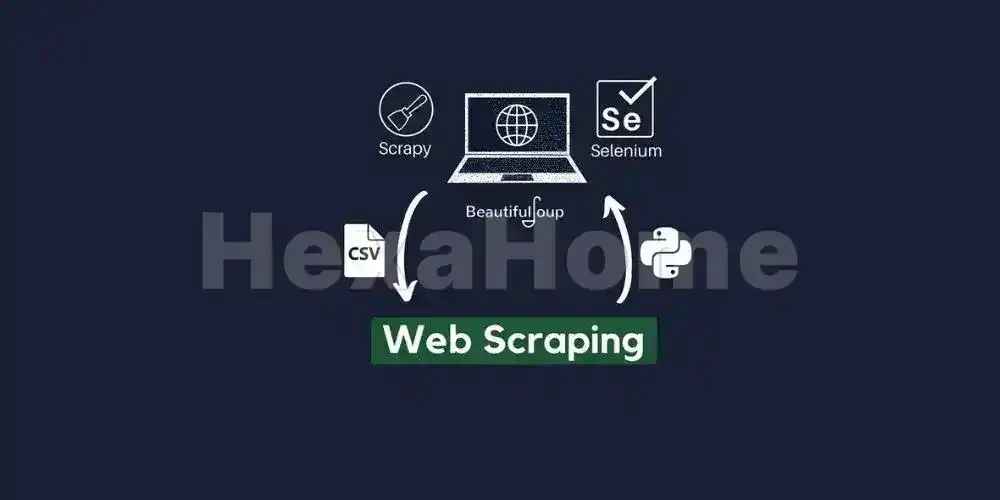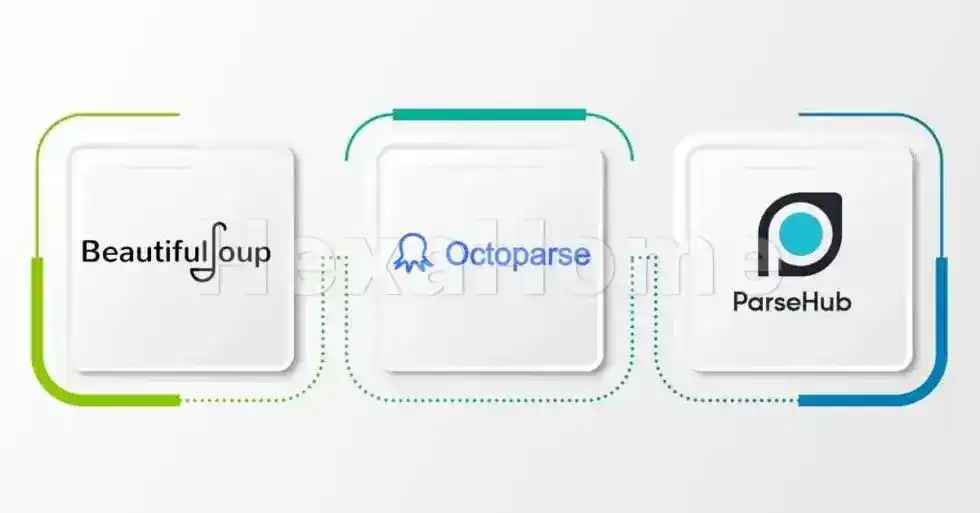Web Scraping: Tools, Applications, and Best Practices
Updated on : 09 December, 2024, 10:00 IST

Table Of Contents
What is Web Scraping?
Web scraping is the automated process of extracting data from websites. It involves fetching web pages and parsing their content to retrieve specific information. This technique can be used to gather data from a single page or across multiple sites, making it a powerful tool for various applications.
How Does Web Scraping Work?
The web scraping process typically follows these steps:
- Sending an HTTP Request: A scraper sends a request to a web server to access a specific URL.
- Receiving the Response: The server responds with the HTML content of the requested page.
- Parsing the Data: The scraper parses the HTML to locate and extract the desired information using techniques like DOM manipulation or regular expressions.
- Storing the Data: The extracted data is saved in a structured format, such as CSV, JSON, or directly into a database for further analysis.
Applications of Web Scraping
Web scraping has a wide range of applications across different industries:
- Market Research: Businesses scrape competitor websites to analyze pricing strategies, product offerings, and customer reviews.
- SEO Optimization: Marketers use scrapers to gather keyword data, backlinks, and other SEO metrics from competitors’ sites.
- Data Journalism: Journalists scrape data from public records or social media platforms to uncover trends and stories.
- Real Estate Analysis: Real estate professionals scrape property listings to analyze market trends and property values.
- E-commerce Monitoring: Retailers monitor competitor prices and stock levels through scraping.
Popular Web Scraping Tools
With numerous tools available for web scraping, users can choose based on their technical skills and project requirements. Here are some notable options:

Image Source: Image source: AI-generated
1. Octoparse
Octoparse is a user-friendly web scraping tool that provides both desktop and cloud-based solutions. It features a point-and-click interface that allows users to create scraping tasks without coding skills. Key features include:
- AI-Powered Auto-Detection: Automatically identifies data patterns on web pages.
- Cloud Automation: Schedule scrapers to run automatically.
- IP Rotation: Helps avoid bans during extensive scraping sessions.
2. Scrapy
Scrapy is an open-source framework written in Python that allows users to create robust web spiders for crawling and extracting data efficiently. It is particularly well-suited for large-scale projects due to its asynchronous processing capabilities.
- Asynchronous Requests: Handles multiple requests simultaneously for faster data extraction.
- Extensive Documentation: Offers comprehensive guides for developers.
3. Beautiful Soup
Beautiful Soup is another popular Python library used for parsing HTML and XML documents. It simplifies the process of navigating and searching through parse trees, making it ideal for developers who need flexibility in their scraping tasks.
4. ParseHub
ParseHub is a no-code tool that allows users to scrape data from dynamic websites using AJAX technologies and JavaScript. It offers features such as:
- Visual Data Extraction: Users can navigate through a built-in browser to select elements for extraction.
- Scheduled Runs: Automate tasks at specified intervals.
5. Web Scraper (Chrome Extension)
Web Scraper is one of the most popular Chrome extensions for web scraping. It allows users to create sitemaps that define how a website should be navigated and what data should be scraped.
- Easy Configuration: Users can point and click on elements within a webpage.
- Data Export Options: Supports CSV and JSON formats.
Ethical Considerations in Web Scraping
While web scraping can provide valuable insights, it also raises ethical concerns that must be addressed:
- Respecting Robots.txt: Websites often have a
robots.txtfile that specifies which pages can be scraped. Ignoring these guidelines can lead to legal issues. - Avoiding Server Overload: Sending too many requests in a short time can overwhelm servers, disrupting services for other users.
- Data Privacy Compliance: Ensure compliance with laws such as GDPR when collecting personal data.
Best Practices for Effective Web Scraping
To maximize the efficiency and effectiveness of your web scraping efforts, consider the following best practices:
- Choose the Right Tool: Select a tool that fits your technical skills and project requirements.
- Plan Your Scraping Strategy: Outline what data you need and how you will extract it before starting your project.
- Implement Throttling: Introduce delays between requests to avoid overwhelming servers and getting blocked.
- Use Proxies: To avoid IP bans during extensive scraping sessions, utilize proxy servers that rotate IP addresses.
- Handle Dynamic Content: Be prepared to deal with JavaScript-rendered content by using tools that support full browser automation like Selenium or Puppeteer.
Challenges in Web Scraping
Despite its advantages, web scraping comes with challenges that users must navigate:
1. Dynamic Content
Many modern websites use JavaScript frameworks that dynamically load content after the initial HTML page load. This can complicate extraction efforts since traditional scrapers may not capture this content effectively.
2. Anti-Scraping Measures
Websites often implement anti-scraping measures such as CAPTCHAs, rate limiting, or IP blocking to protect their data from unauthorized access. Overcoming these barriers requires advanced techniques like using headless browsers or rotating proxies.
3. Legal Implications
The legality of web scraping varies by jurisdiction and website terms of service. Users must ensure they are compliant with relevant laws to avoid potential legal repercussions.
Future Trends in Web Scraping
As technology continues to evolve, several trends are shaping the future of web scraping:
1. Increased Use of AI
Artificial intelligence is being integrated into web scraping tools to enhance data extraction capabilities. AI algorithms can improve accuracy by learning from previous extractions and adapting to changes in website structures.
2. No-Code Solutions
The demand for no-code solutions is rising as more users seek accessible ways to perform web scraping without programming knowledge. Tools like Octoparse and ParseHub are leading this trend by providing intuitive interfaces.
3. Focus on Data Quality
As businesses increasingly rely on data-driven decisions, ensuring high-quality data extraction will become paramount. This includes implementing validation checks during the extraction process to maintain accuracy.
Conclusion
Web scraping is an invaluable tool that enables users to harness the vast amounts of information available on the internet efficiently. By understanding how web scraping works, utilizing the right tools, adhering to ethical guidelines, and following best practices, individuals and organizations can unlock insights that drive informed decision-making across various sectors.
As technology evolves, so too will the methods we use for web scraping—making it essential for anyone involved in data collection or analysis to stay informed about developments in this dynamic field. Whether you are a marketer looking for competitive insights or a researcher gathering data for analysis, mastering web scraping can significantly enhance your capabilities in today's data-driven world.
In summary, web scrapers are not just tools; they are gateways to valuable information that can shape strategies and inform decisions across industries. As you embark on your web scraping journey, remember to respect ethical boundaries while leveraging this powerful technology responsibly.


